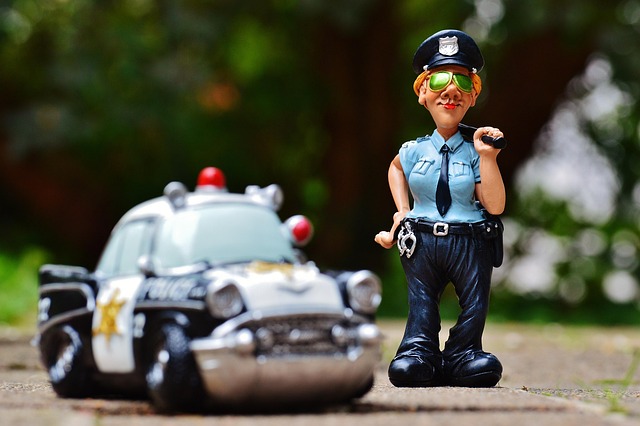Looking to register your car in California? This guide walks you through the step-by-step process, ensuring a smooth transition. First, understand the eligibility and requirements for registration. Gather essential documents, including proof of ownership and insurance. Run a vehicle history report using the DMV’s VIN Verifier for peace of mind. Then, visit a California DMV office or complete the process online/in-person, depending on your preference.
- Understand Eligibility and Requirements
- Gather Necessary Documents
- Perform a Vehicle History Report (DMV VIN Verifier)
- Visit a California DMV Office
- Complete the Registration Process Online or In-Person
Understand Eligibility and Requirements

Before registering your car in California, it’s crucial to understand who is eligible and what requirements must be met. To register, you need to own or lease a vehicle, and it must be legally operable on California roads. The California Department of Motor Vehicles (DMV) requires several documents, including proof of insurance, proof of residency, and the vehicle’s title. Additionally, the car must pass an emissions test and safety inspection, which can often be conveniently completed through a mobile vin verification service or a local shop.
For out-of-state residents looking to register their vehicles in California, specific additional steps apply. You’ll need to establish California residency within 30 days of moving here. This involves updating your driver’s license and registration, among other documents. Using a mobile vin verifier for inspections can streamline this process by providing quick and reliable vin inspection results, ensuring you meet all necessary requirements efficiently.
Gather Necessary Documents

Before registering your car in California, you’ll need to gather several essential documents. The first step is to ensure that your vehicle has a valid and accurate Vehicle Identification Number (VIN). Use a DMV VIN verifier or a mobile VIN verification service to confirm the VIN’s integrity, as this is crucial for identifying your car accurately. Additionally, you’ll require proof of ownership, which can be in the form of a title or a bill of sale. If the vehicle is leased, you must include the lease agreement.
Other mandatory documents include a valid driver’s license and proof of insurance. For non-residents temporarily registering their vehicles, they may need to provide additional documentation, such as visa or work permit details. It’s also beneficial to have a completed registration application form readily available, which can be obtained from the California Department of Motor Vehicles (DMV) website or obtained at a local DMV office. Having these documents ready ensures a smoother process when registering your car with the DMV.
Perform a Vehicle History Report (DMV VIN Verifier)

Before registering your car in California, it’s crucial to perform a Vehicle History Report using the DMV’s VIN Verifier tool. This process is essential as it allows you to access critical information about the vehicle’s past, ensuring it hasn’t been reported stolen or had any major accidents. By utilizing the DMV VIN Verifier, you can verify the authenticity and history of your car, which is a vital step in the registration process.
The DMV VIN Verifier provides a comprehensive mobile vin verification service, enabling you to check the vehicle’s history from the convenience of your own home or even during a test drive. This digital inspection ensures that you’re making an informed decision when purchasing a used car, protecting yourself from potential issues and ensuring a smoother registration process in California.
Visit a California DMV Office

Visiting a California DMV office is a crucial step in registering your car. These offices serve as the primary point of contact for all vehicle registration and titling services. When you visit, be prepared to bring along essential documents such as your driver’s license, proof of insurance, and the vehicle’s title (if applicable). The staff at the DMV will guide you through the process, which includes verifying the vehicle’s identification number (VIN) using a DMV VIN verifier. This step ensures that your car matches the information on file and helps prevent fraud.
For those who prefer a more convenient approach, consider utilizing a mobile VIN inspection or a mobile VIN verifier. These services allow you to get the necessary verification done right from your location, saving you a trip to the DMV. With just a few details, a professional can remotely confirm your car’s authenticity, making the registration process smoother and faster.
Complete the Registration Process Online or In-Person

You have the option to complete your car registration either online or in-person at a DMV (Department of Motor Vehicles) office in California. Both methods offer convenience, but going digital has numerous benefits. Online registration allows you to submit all necessary documents and even perform a DMV VIN verifier check using your vehicle’s unique identifier—the Vehicle Identification Number (VIN). This streamlined process saves time as you won’t need to visit a physical location.
However, if you prefer a more traditional approach or encounter technical difficulties, visiting a DMV office is still an efficient option. The in-person registration process involves filling out forms and providing valid identification and proof of insurance. A key step in both methods is conducting a VIN inspection to ensure the vehicle’s history is clear and accurate, enhancing the overall registration experience for California residents.
Registering a car in California is a straightforward process, but understanding the eligibility criteria and gathering all necessary documents is crucial. By performing a Vehicle History Report using the DMV’s VIN Verifier tool, you can ensure your vehicle’s integrity. Whether completing the registration online or in-person at a DMV office, always keep your documents organized for a smooth experience. Remember to consult the official California DMV website for up-to-date information and guidance.
